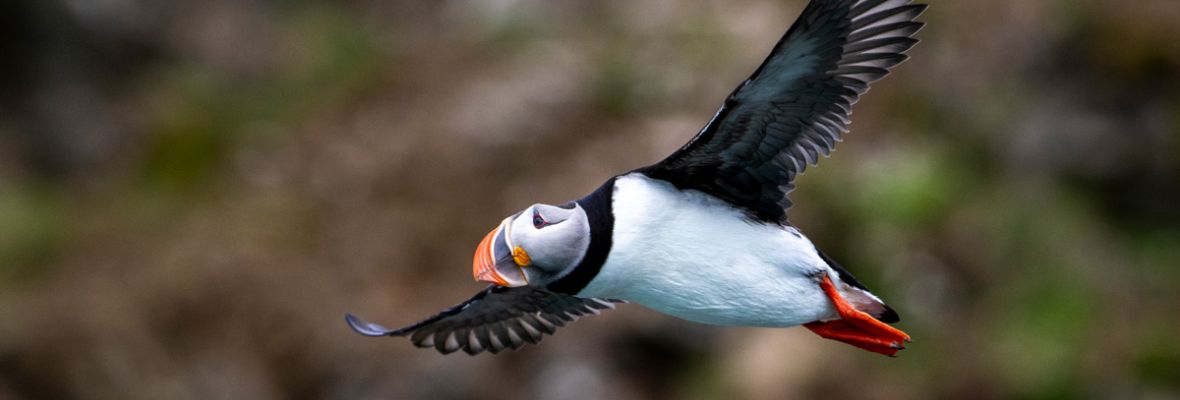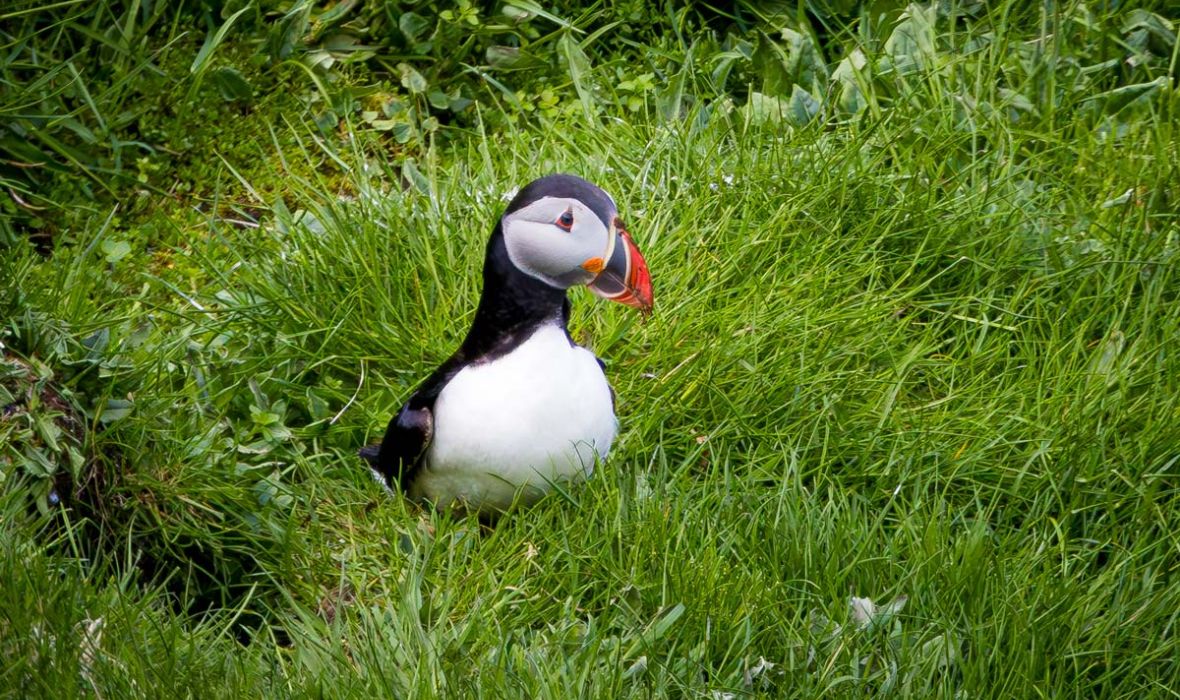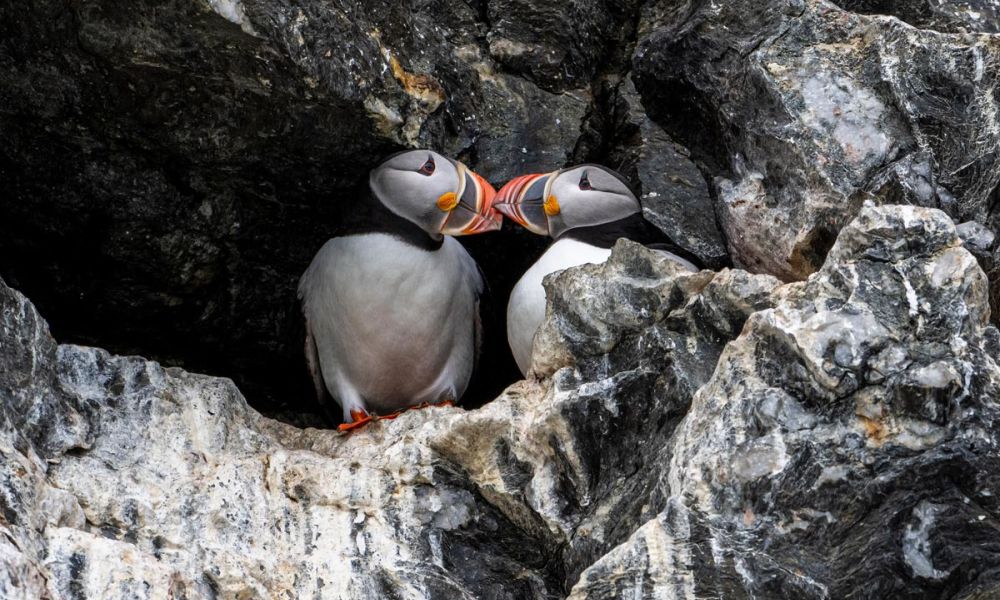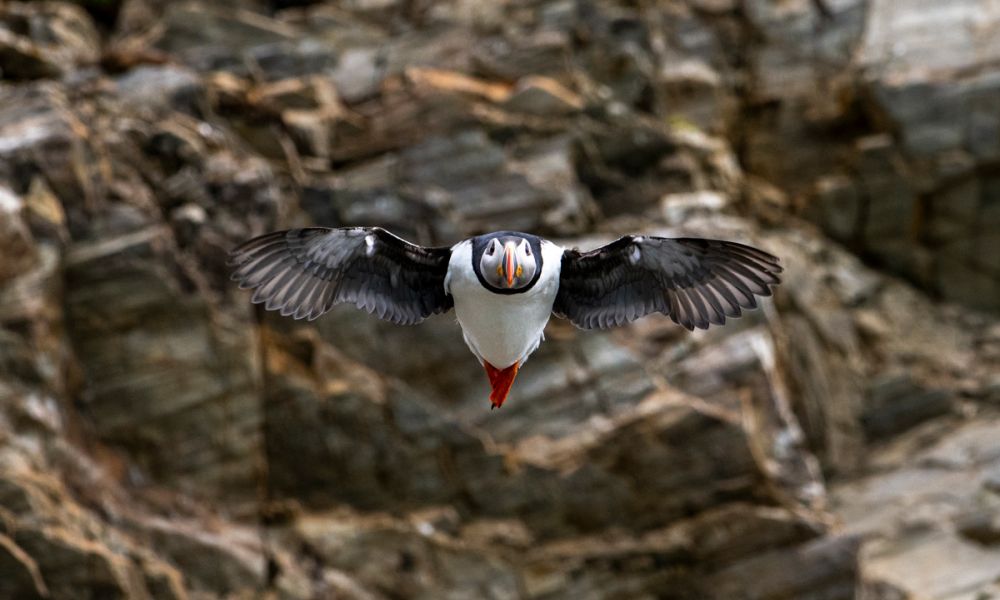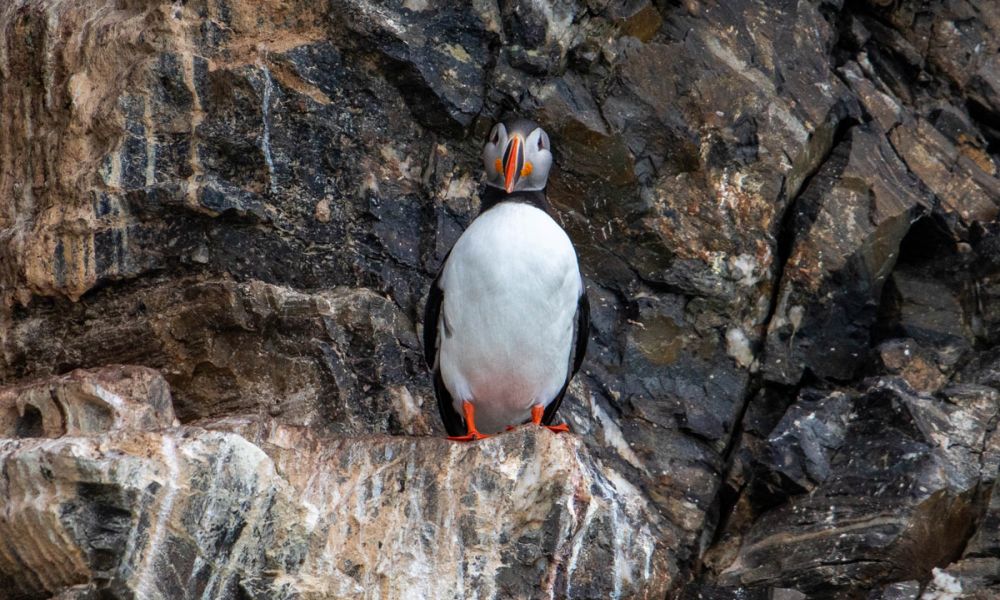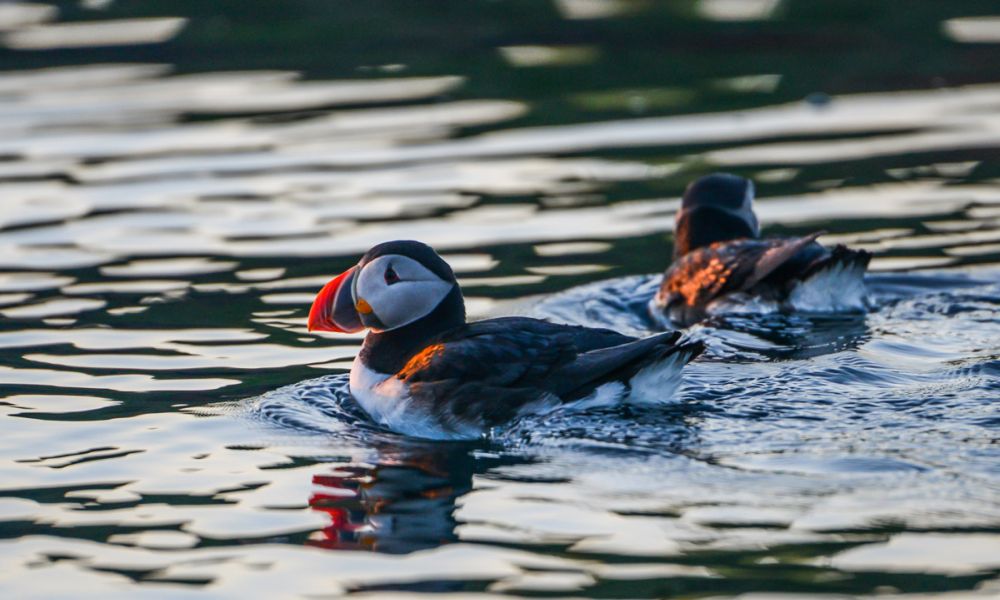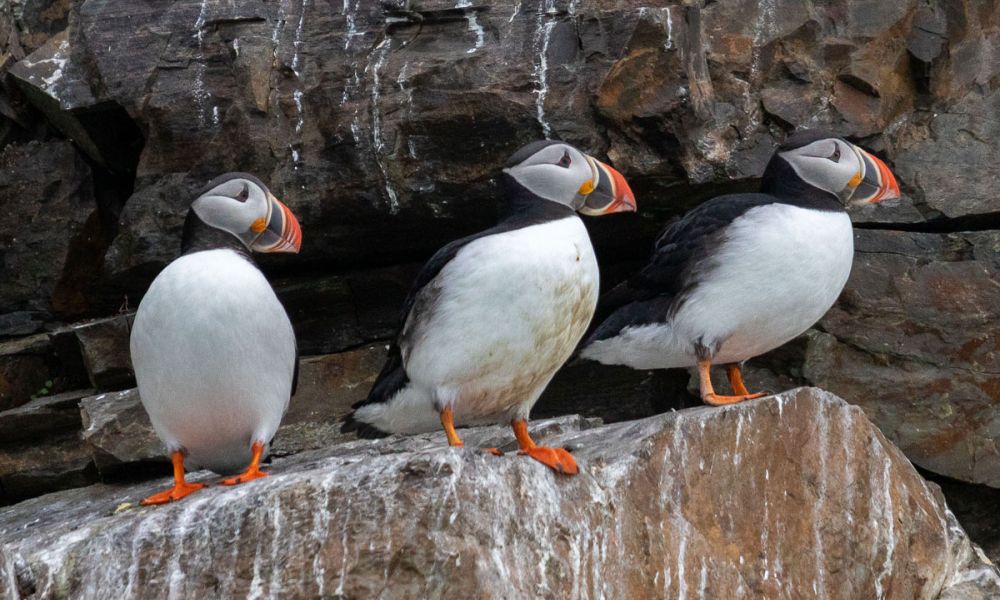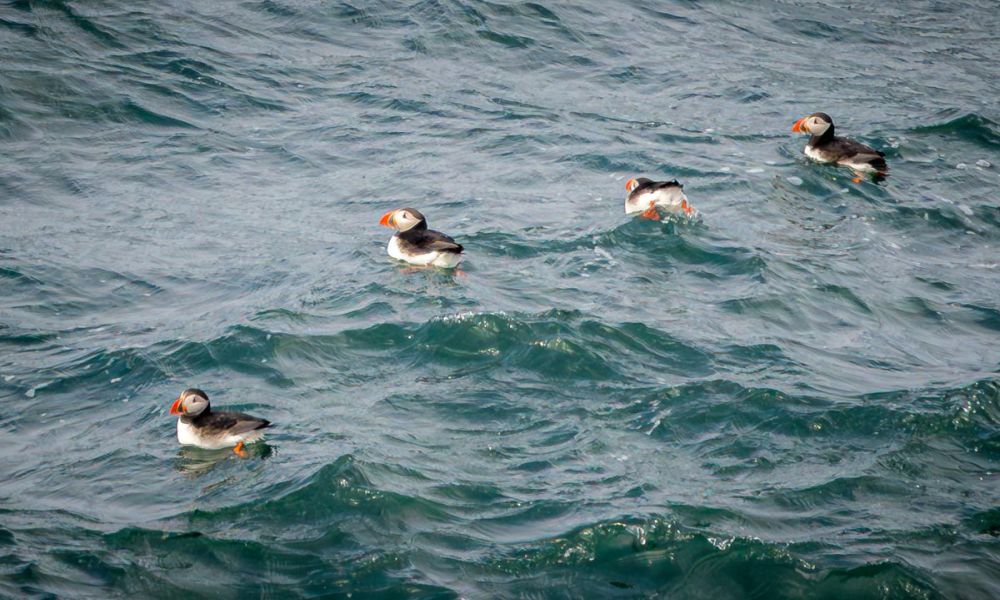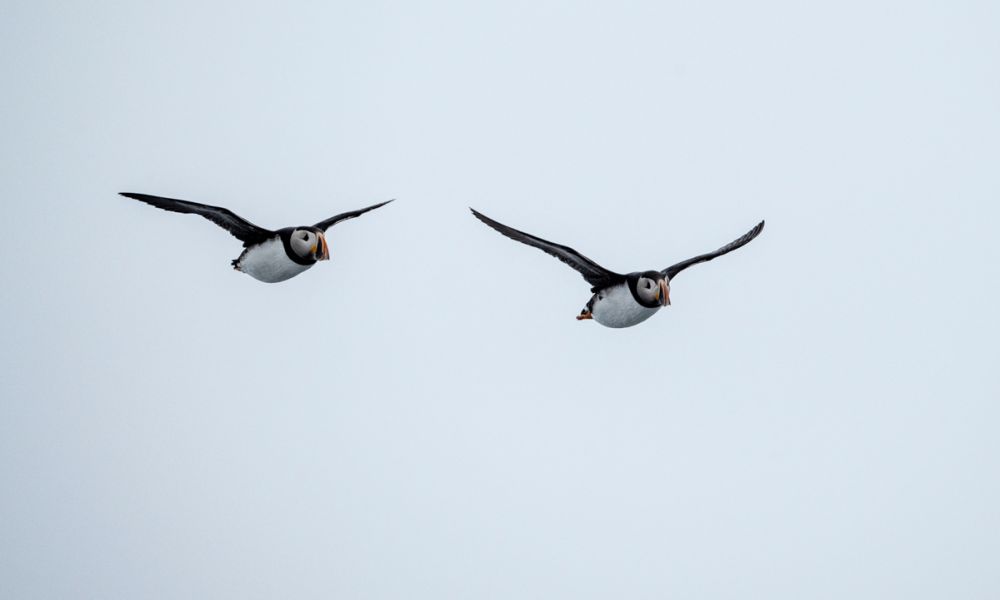Is a Puffin a Penguin?
Even though those two birds look very similar, puffins are not penguins. They are birds from different species with some differences. For example, penguins are flightless birds, whereas Atlantic puffins are strong fliers, averaging speeds of 80 km/h (50 mph). Moreover, they are very far apart geographically, with penguins found in Antarctica and Atlantic puffins in the Arctic.
What Does the Atlantic Puffin Eat?
Their diet consists of small, elongated fish such as sand lance, capelin, small herring, and Atlantic cod, which can be held in large quantities in their beak. During the extreme winter weather, and thanks for their ability to dive nearly 70 metres under the sea, these birds also consume small crustaceans, ragworms, and squid.
What Does an Atlantic Puffin Look Like?
They didn’t earn the nicknames of ‘clown of the sea” and “sea parrot” for no reason. These incredible puffin birds have orange legs and feet, alongside a highly compressed beak with colourful shades of red, orange, yellow, black, and white during the mating and breeding seasons. Outside the breeding period, it appears greyish and smaller, as some of the beak's appendages are shed along with the feathers during the autumn moult.
How Big Is an Atlantic Puffin?
Having roughly the same size to other wildlife spotted in our Arctic expeditions, such as the black guillemot, the clown of the sea measures 28–34 cm (11–13 inches) long, with a wingspan of 50–60 cm (20–24 inches). They typically weigh 400–500 grams (0.9–1.1 lbs), and a baby puffin, also known as ‘puffling’, measures around 7 cm (2.7 inches) in length and weighs approximately 40 grams (1.4 oz).
Where Do They Live?
The Atlantic puffin's habitat is in the North Atlantic, nesting on coastal cliffs and isolated islands. These precious animals can be found in several locations, including Jan Mayen, Iceland, Canada, Svalbard, Greenland, France, Norway, England, and Scotland. These regions offer rocky shorelines and suitable terrain for burrowing, which is essential for their breeding.
When Is Puffin Season in Iceland?
One of the highlights of our expeditions to Iceland is spotting these birds. Over half of the world's population, roughly 8 million, inhabits the country. The best time to observe them is during summer, from May to August, when they return to the coastal cliffs to breed. After August, they migrate to the open ocean.
Is the Atlantic Puffin Endangered?
Although the population of the clown of the sea is estimated to be around 12 million individuals worldwide, according to the IUCN statistics from the past decade, their conservation status has shifted from 'Least Concern' to 'Vulnerable'. Populations have declined due to climate change, overfishing, and habitat destruction.



